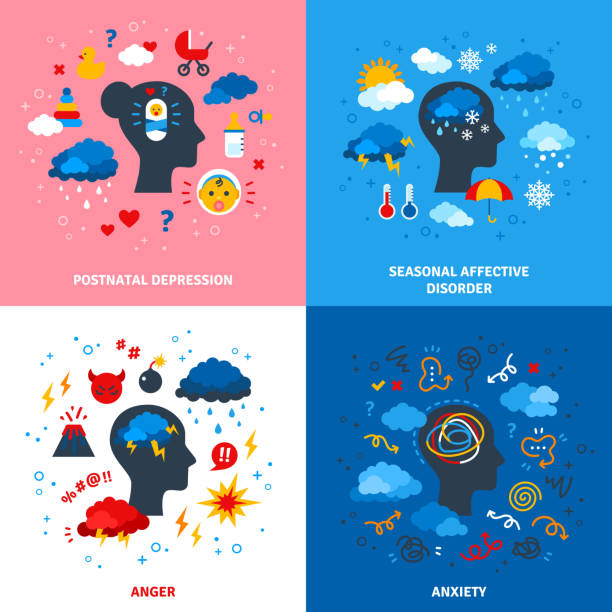How to Cope with Seasonal Affective Disorder (SAD)
Seasonal Affective Disorder
Each year it happens, and every year it is a shock to the system. Then, finally, nature gives one last party, gracing each tree with a crisp blaze of glory. Eventually, after consuming the previous spiced cider, the pumpkins soften, and the long dark days of winter descend.
Seasonal Affective Disorder (SAD) is a variety of depression associated with seasonal shifts; SAD occurs and stops around the same time every year. However, if you are like most individuals with SAD, your symptoms begin in the fall and extend into the winter months, draining your energy and causing you to feel cranky or short-tempered.
These symptoms frequently subside during the spring and summer months. Less commonly, SAD causes depression in the spring or early summer and fixes during the fall or winter months.
In most of the northern hemisphere, December through March brings a windy chill that makes the dreary days feel like we live alone in Siberia.
It maybe sounds dramatic, but not for the approximately six percent of Americans who suffer from Seasonal Affective Disorder (SAD).
In 1984 this disorder got its name by Dr. Norman E. Rosenthal and his colleagues. Today, this disorder characterizes as a seasonal pattern of major depressive episodes. Seasonal Affective Disorder varies widely in severity, from the doldrums (winter blues) to disabling jadedness. Its cyclical nature differentiates SAD from a major depressive disorder.
There is a propensity to blame everything on psychological causes, but we overlook the obvious: it is dark outside. Therefore, we think SAD goes unnoticed and is right under our noses.
Although people do not know the exact causes of SAD, some, including those with a family history of Seasonal Affective Disorder, and those with bipolar disorder or depression, are at higher risk for suffering from SAD than others. Women are also more susceptible to suffering from SAD than men.
SEASONAL AFFECTIVE DISORDER SIGNS TO BE AWARE OF
Your doctor may diagnose SAD if you have symptoms of depression every season for two consecutive seasons. These symptoms include:
- Feelings of hopelessness
- Feelings of depression all day, almost every day
- Decreased energy levels
- Trouble sleeping
- Lack of interest in activities once enjoyable
Some signs specifically describe SAD in the winter months; sufferers may expect to have:
- Exhaustion
- Low energy
- Carbohydrate cravings
- Tendency to overeat and experience weight gain
- Social withdrawal
In the summer months, individuals with SAD may notice:
- Trouble sleeping
- Anxiety
- Irritability
- Weight loss or decreased appetite
- Periods of violent behavior
- Restlessness

While licensed healthcare professionals must be the ones to diagnose and treat Seasonal Affective Disorder, since they first identified it, various treatment alternatives have emerged over the decades.
Treatment for SAD may include phototherapy (light therapy), psychotherapy, and medication.
Next, we will mention a few ways for patients and their physicians to approach the disorder, ranging from the most widely used to the least used.
LIGHT THERAPY
Light therapy offers an accessible and effective treatment. In 1980, Dr. Alfred Lewy discovered that certain levels of artificial light suppress nighttime production of melatonin in humans, a hormone that helps regulate sleep cycles.
Waking up in the dark may have a similar effect to jet lag in individuals with Seasonal Affective Disorder. Therefore, bright light therapy remains the first line of defense. More than sixty studies clinically demonstrate that light therapy eases symptoms.
Nevertheless, notice that because Seasonal Affective Disorder (SAD) is a medical condition, using light boxes should be under the care of a professional.
This treatment generally consists of sitting in front of a light box that emits ten thousand lux of cool white fluorescent light for twenty to sixty minutes every morning during the fall and winter. Luckily, there is no need to be concerned about ultraviolet rays damaging the skin, as long as you have a light box that filters out UV rays.
MEDICATION
Medications are very effective alone or in conjunction with other treatment methods. For example, certain antidepressants improve serotonin levels in the brain, improving your mood; they try to increase the neurochemicals that control behaviors and temper.
Your physician may suggest you take medications before the season begins and even after your symptoms stop to ensure they do not return. Your physician may also try different drugs to see what works best for you.

PSYCHOTHERAPY
Talk therapy or psychotherapy can help with various mental and emotional health conditions such as SAD, anxiety, trauma, depression, or grief.
There are different kinds of talk therapy, such as Cognitive behavioral therapy, which involves working to change behavior and thought patterns so you may learn to focus and problem solve. It also helps you recognize negative thoughts and learn to replace them with positive ones, and cope with SAD symptoms.
You can discuss any mood fluctuations with your doctors; they can recommend therapies you should try or lifestyle alterations you may need to make. And always, if you detect symptoms, do not be embarrassed to talk about them.
Finding the correct provider may be straightforward instead of overwhelming in answering questions. The provider should specialize in TMS therapy and have an experienced and trained treatment staff to support you. In addition, they should be able to customize your care to uphold your particular circumstances and coordinate with your referring physician.
Most importantly, you should feel confident about putting your health in their hands after your first consultation. If they do not check all the boxes for you, there is nothing wrong with looking elsewhere. You are the most important and should feel empowered to choose the best TMS provider for your care.
